Why Wool is the most dynamic insulator on the planet:
- Harmful chemicals are in your walls; wool filters the air and improves indoor air quality. The amino acids in wool irreversibly bond with formaldehyde, NOₓ and SO2 on a molecular level.
- Moisture and climate control – moisture and mold happens in your walls. Wool absorbs and adsorbs it against 65% relative humidity.
- Suppresses mold and mildew – natural keratin prevents against the spread of mold and mildew.
- Absorbs sound – wool exceeds other forms of insulation as an acoustic buffer.
- Thermal conductivity – wool batts are industry standard at 3.9 per inch; loose-fill outperforms at 4.3 per inch.
- Resists fire – wool will not support a flame below 1100F; conforms to Class A of the ASTM E84 test.
- All natural – wool insulation is entirely renewable and sustainable.
- Long lasting – inherent characteristics allow stated R-values to exceed other forms of insulation.
- No off-gassing – natural characteristics make our insulation devoid of harmful chemicals.
- Installs easily – blown-in and batts are installed like other mediums but with no protection required.
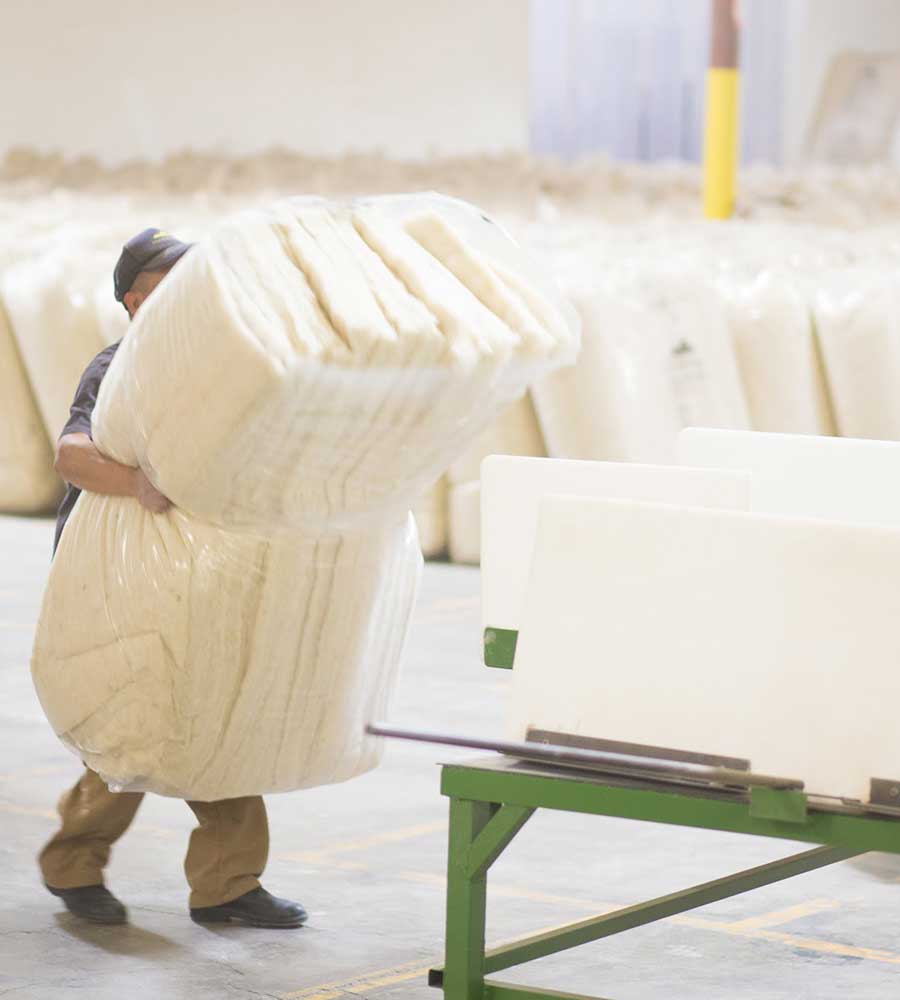

Wool Improves Indoor Air Quality
The inherent construct of a wool fiber traps air and in turn insulates your home. It also does much more. Wool insulation removes dust particles which may contain harmful chemicals such as formaldehyde, nitrogen oxide and sulphur dioxide. The amino acids in wool irreversibly bond with these chemicals in both a chemical and physical manner. The former, called chemisorption is ~80% of the bond and is irreversible; the balance is physisorption and only unwinds at extreme temperature or moisture levels. No other type of insulation offers these unique capabilities. On the contrary, most conventional insulation mediums are emitting or ‘off-gassing’ harmful chemicals. This can lead to adverse health effects and reduced indoor air quality.

Wool Manages Moisture
Wool fibers inherently manage moisture, absorbing and releasing it against 65% relative humidity. This allows for condensation to be minimized as wool generates heat from energy, thus making it warm when wet. Equally important, wool is a keratin and therefore will not support the growth of mold. These characteristics, on their own, make wool an outperformer as an insulator; on a relative basis it is second to none.

Sound Absorption
Visco-elastic properties of a wool fiber assist in the conversion of sound energy to heat. What’s more, a wool fiber is unique in its ability to simultaneously reduce air born sound, surface noise and sound transmission.

Resistance to Compression
Resistance to compression (R to C) is the force per unit area required to compress a fixed mass of wool to a fixed volume. Resistance to compression is related to fiber diameter and the form and frequency of crimp. For instance, high R to C wools have a harsher handle, are resistant to felting and are bulkier. Studies show the majority of wool finer than 28 as being in the middle resistance-to-compression range (53%). On the other hand, some 73 percent of the wool coarser than 28 micron was evaluated to be highly resistant to compression. Our wool is >35 micron.
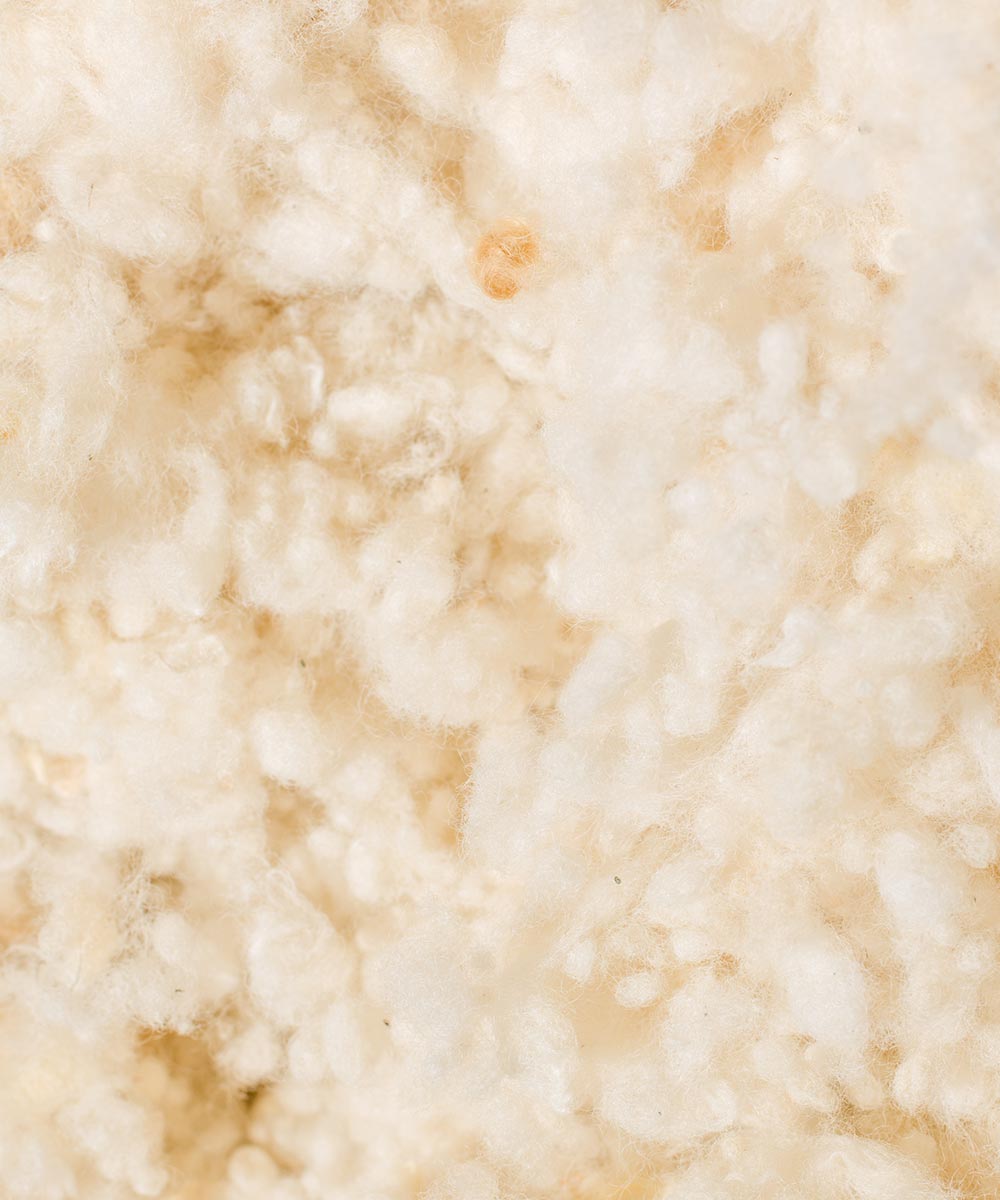
Why Havelock Wool?
We source only the best fibers for use in our wool insulation. These decisions are driven by time, experience, science and technology. The fibers we use are a certain dynamic – we shear them from a specific breed of sheep best suited for insulation.
We don’t make our insulation from wool scraps. Instead, we process high quality wool fibers through our proprietary manufacturing process. This yields a uniform, high-performance, long-lasting product.
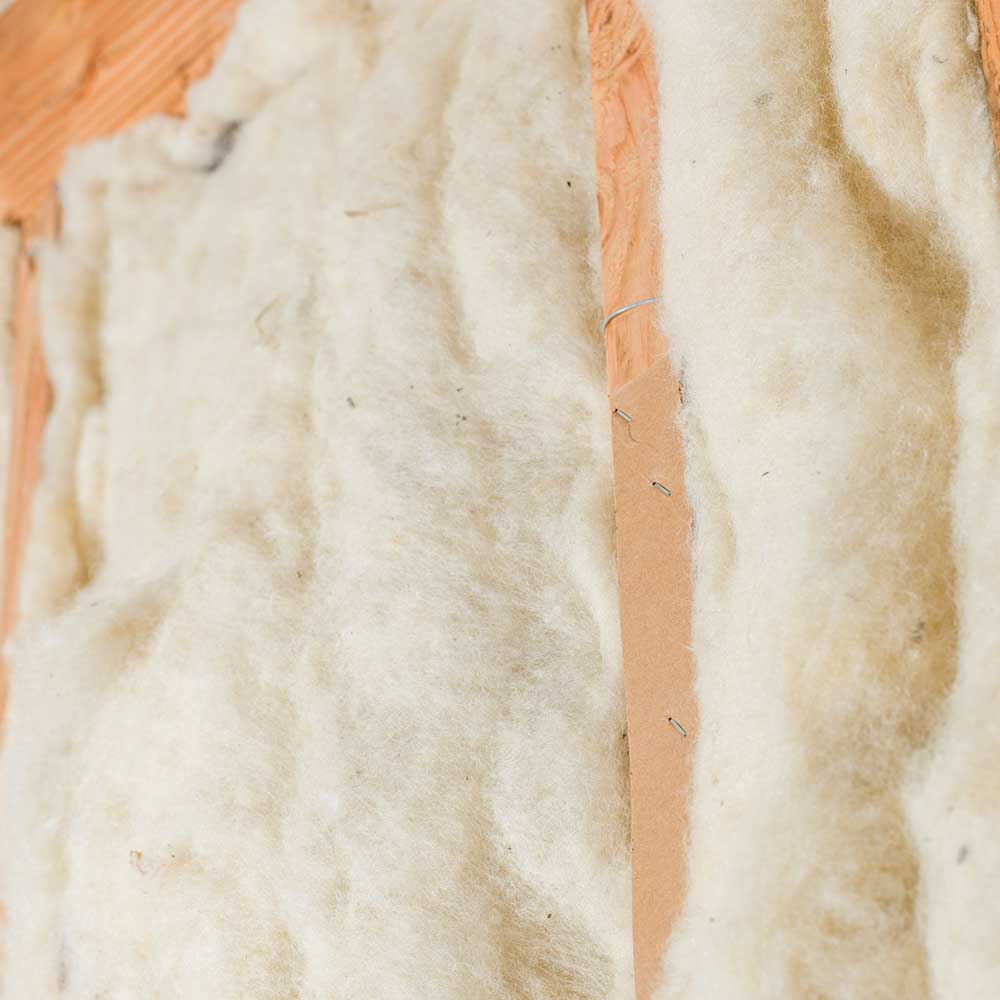
Sheep Wool Insulation R-Value
R-value denotes resistance to heat flow. The higher an insulation’s R-value, the greater its insulating power. Sheep wool insulation R-value equals or often surpasses that of other insulation materials. Havelock Wool offers both wool batts and blown-in insulation. The R-values of each product are 3.6 per-inch and 4.3 per-inch respectively.The extremely high integrity of a wool fiber allows it to outperform the synthetic competition, while decreasing impact on the environment.
For more facts and data regarding wool as an insulator, please download our informational brochure.
Wool as an Insulator
Wool’s natural structure makes it incredibly effective as an insulator. Each wool fiber is composed of protein molecules (keratin) organized into five follicles. These fibers effectively trap air, moisture and harmful chemicals. Using wool as insulation actually helps keep your home warm in the winter and cool in the summer, while improving indoor air quality.
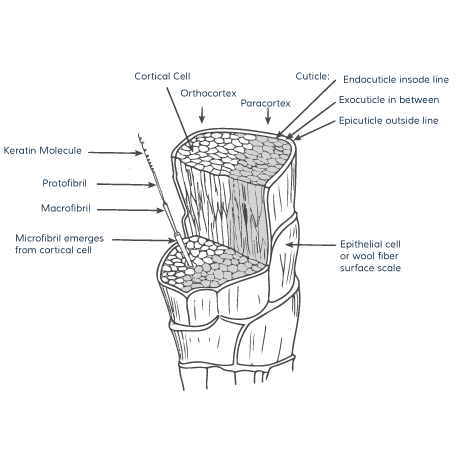
Chemical Structure of a Wool Fiber
- Wool is composed of proteins known as keratins
- A wool fiber’s chemical complexity makes it resilient and elastic.
- Each fiber can be bent on itself over 20,000 times.
- Wool fiber properties yield a longer life than man-made fibers.
- Wool’s scaled structure allows for absorption and retention of airborne dust.
- Wool’s moisture regain is comparatively high.
- The helical properties of a wool fiber lead to enhanced sound absorption.
- Harmful chemicals, such as formaldehyde, are naturally consumed from the atmosphere and retained.
Bring Your Residential Or Commercial Insulation Project Into The Realm Of Sustainable, Non-Toxic High Performance.

Fiberglass insulation (the pink stuff) consists of superfine woven and compressed glass fibers that are produced in mass and cut into rolls or “batts” of insulation. By comparison, sheep wool may also be cut into batts, but this product is all natural, organic and biodegradable.
Fiberglass batt insulation has been the industry standard for nearly 80 years. More recently, a blown-in product has been introduced to the market. Fiberglass insulation is cheap and readily available; accordingly, it is likely to remain the industry standard in perpetuity.
Things to look out for: you get what you pay for and increasingly cheap products are redefining low quality; we’ve yet to meet anyone who actually likes fiberglass insulation; it was at one time labelled a carcinogen. The removal of such a badge of (dis)honor occurred for reasons we don’t understand. Our views are here – read more.
Cellulose or recycled newspaper is a cheap alternative to fiberglass. Industry practitioners like to call it ‘green’ given a relatively accelerated level of recycled content. Cellulose insulation is blown-in and has gained a fair bit of traction given its low cost. From an integrity perspective it is difficult to find any redeeming qualities beyond carbon capture. Newspaper as an insulator conjures images of those who lost their way and no longer have a house to call home. Further, we all know how well paper burns, which means more than an average amount of chemicals are required to meet building codes. Anecdotally, we’ve yet to meet an installer who would put cellulose in their own home. We’ve seen 30-40 year old cellulose insulation in a pile of dust at the bottom of a wall cavity, and we all know how wet paper has a tendency to mold. Like our next analog, cellulose is a nice idea but a product with no integrity that attracts interest based on cost.
Cotton insulation would seem like a reasonable solution, but like its synthetic brethren, this fiber lacks integrity. Given the inevitability that moisture will infiltrate an insulated cavity and cotton’s propensity to create mold and mildew means this product is a nice idea until pushed against real efficacy. The installer community is not a fan due to rigidity and difficulty in cutting. This should be less of a concern than the fiber’s inherent ability to underperform.
The irony in the use of the word wool notwithstanding, basalt rock and slag insulation is a decent product on its own. Basalt is natural and slag is a byproduct of steel production. The former is benign while the latter comprises excessive energy use which is compounded with the need for extreme high heat to make an insulation product. Moreover, the binder used to make batts is formaldehyde. Aside from inherent inadequacies and a fair number of complaints from the installer community rock wool has its uses. We’d stick to its rigid products being installed on the exterior and leave the natural stuff for the breathable air.
Foam insulation will ideally exit the equation exponentially faster than it arrived. One might argue that the idea of combining a so-called air barrier with elevated (stated) r-values meant foam had the potential to be a one-stop panacea for insulative challenges. On balance that might be the case. In practice, not so much. Spray foam insulation is a chemical manufacturing facility that moves between job sites. Appropriate training used to be somewhat of a norm, now spray trucks can be rented. The product is toxic, it is not permeable and therefore forces water into unknown voids and when it cracks the potential for disaster is limitless. We’ve written about the subject here, as have our friends at 475 High Performance Building Supply here. In short, it is a mistake to introduce these chemicals into your live / work space for all sorts of reasons – not least there are natural, high-performance alternatives available: like the smart wall here.
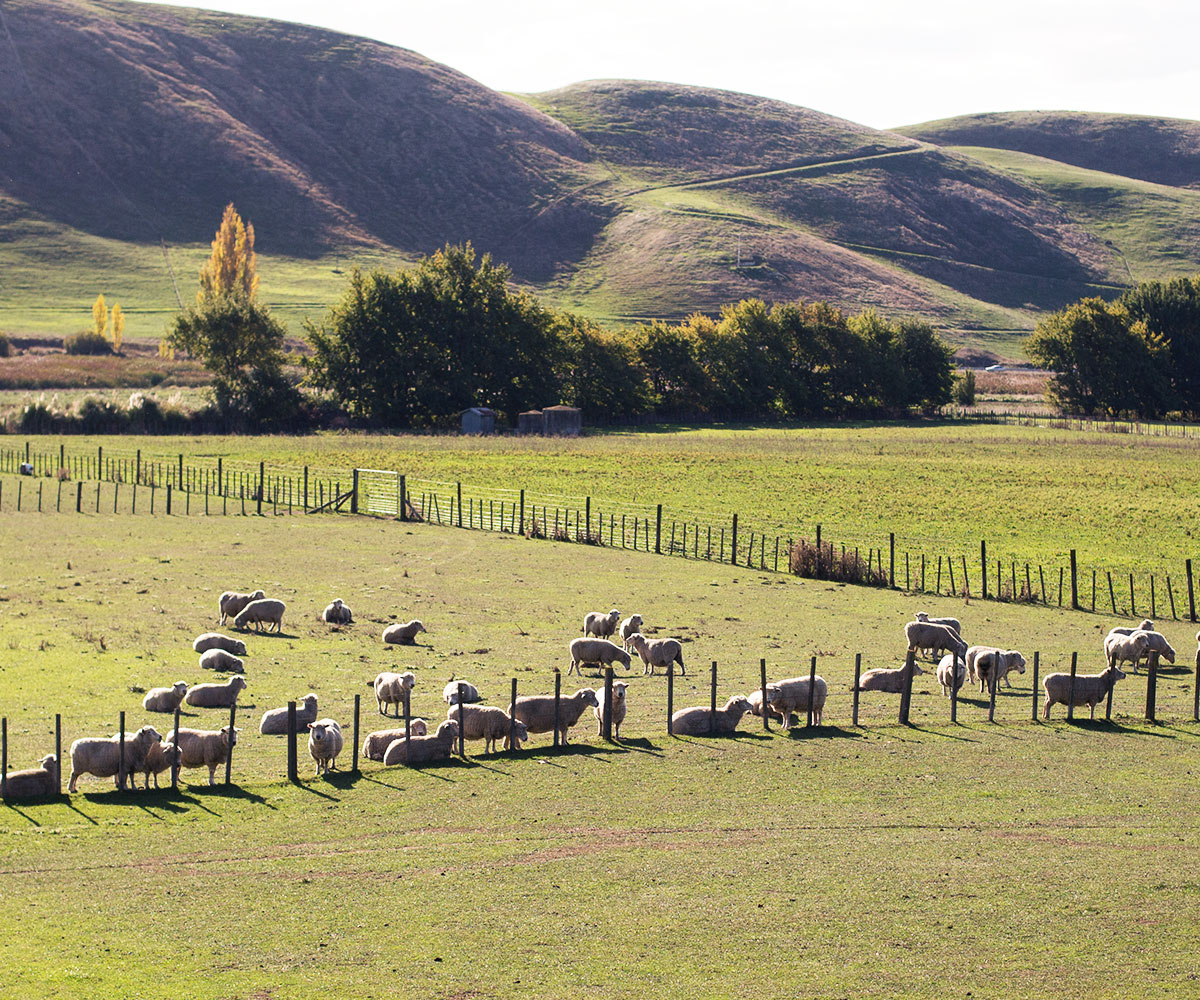
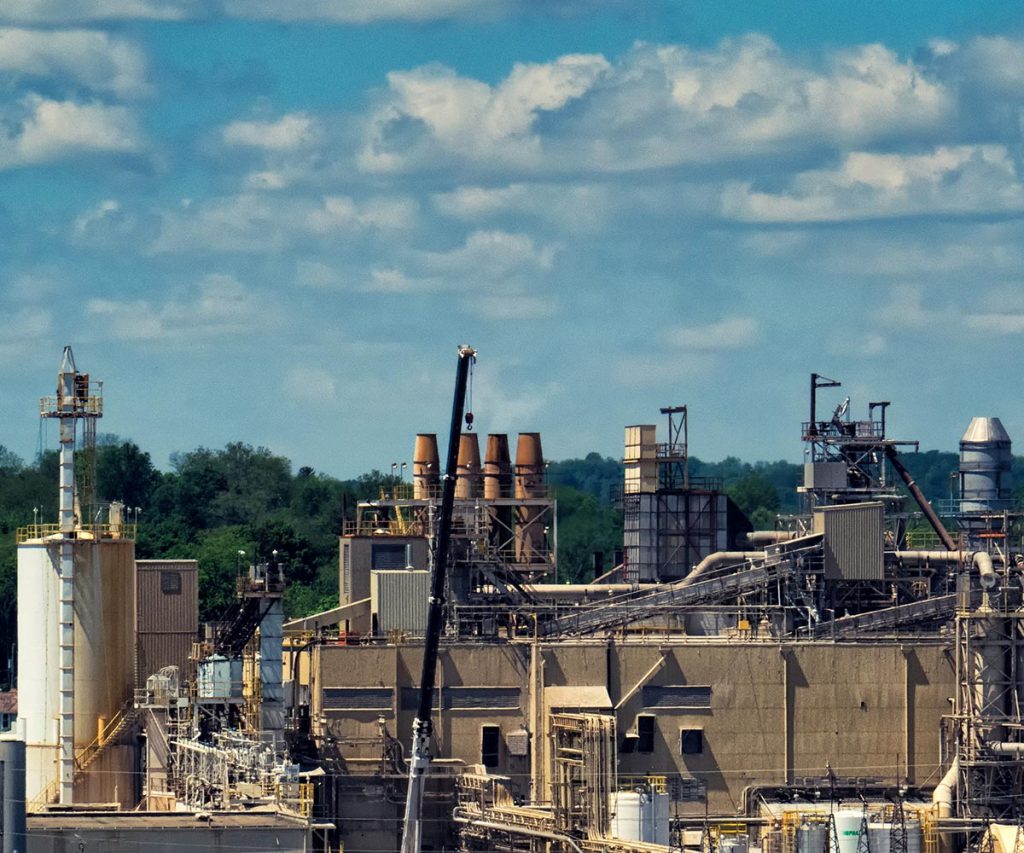
Dont put your architect or GC in charge of your health
Sustainability Accreditation
Connect with the Havelock Flock
It is our goal to produce a truly superior building product with unrivaled integrity. We work exclusively with those who appreciate alternative building products and a healthier, more sustainable ecosystem. We are actively building consumer awareness concerning conventional toxic building materials.
